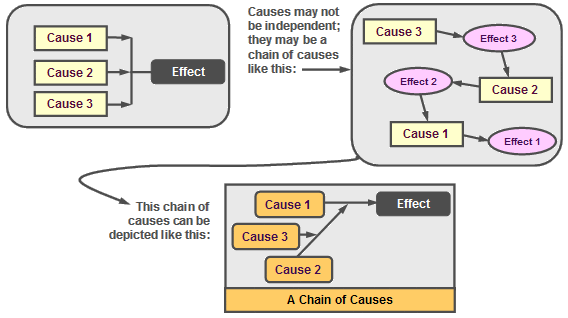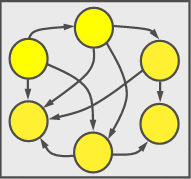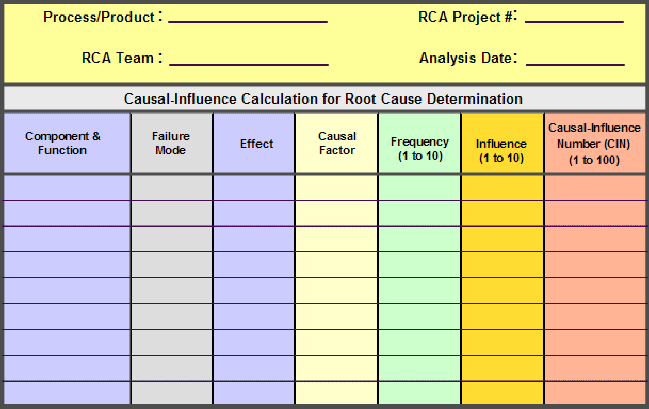Resource Centers
Finding the Root Cause
No formula for finding root causes exists.
- Start by studying symptoms.
- Group causes into like categories.

- Look for chains of causes.

- Are the causes interrelated?

Causal Influence Numbers (CINs) can help when dealing with complex problems.

- Determining a Causal Influence Number can help point the way when:
- A problem is so complex with so many relationships between the causes that the root cause is not obvious.
- A complex problem has several (root) causes contributing to the problem.
- Causal Influence Numbers rate the impact of cause on the effect on a relative rating scale of 1 to 100.
- The higher the rating, the greater the impact and the more probable that the cause is the root cause.
- See the Appendix for generic CIN Frequency Rating Influence Rating Scales.
To draw conclusions, data must be collected and analyzed.
- Visual displays of data often provide the most helpful clues.
- Standard data collection tools include:
- Data collection forms
- Checklists
- Tally (or check) sheets
- The following are both data collection and data display tools.
- Run Charts (Trend Charts)
- Histograms
- Scatter Diagrams
- Concentration Diagrams
- Workflow Diagrams
- Data display tools and techniques include:
- Standard charts and graphs
- Pareto Diagrams
- Run Charts (Trend Charts)
- Histograms
- Scatter Diagrams
- Concentration Diagrams
- Workflow Diagrams
- Cause and Effect Diagrams
- Data analysis tools and techniques include:
- Control Charts (SPC)
- Tests of Significance
- Correlation and Regression Analysis
- Multivariate Analysis
- Time Series Analysis
- Design of Experiments
- Failure Analyses
- Simulations
Investigative tools may be needed to “question the process.”
- Investigative tools include:
- The Five-Whys
- Comparative Analysis (What Is-What Is Not)
- Timeline Analysis
- FMEA (Failure Mode and Effects Analysis)
- Fault Tree Analysis
- Design of Experiments
What if the root cause is still unknown?
- If the root cause is still hidden from view, it is time to retrace the steps taken, starting way back with the Problem Statement.
- Something may be “missing” ask:
- Is the task clear?
- Has the process been properly defined?
- Does the team have the necessary skills, knowledge and experience to tackle the job?
Parting thoughts regarding finding the root cause:
- Rarely will all tools and techniques be needed to uncover a root cause. Experience is the best judge to determine the best order to use the various tools and techniques available to search and question processes for the root cause to a specific problem.
- When the root cause is found, always ask the “root cause” question:
Does this cause (or causes) explain all that we know about what the problem is, as well as all we know about what the problem isn’t?
- If answer is a resounding “YES,” the root cause has most likely been found and hearty congratulations are in order.


